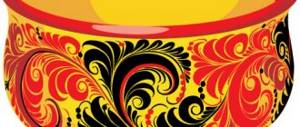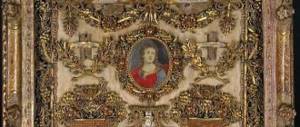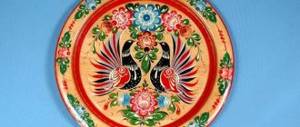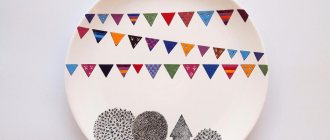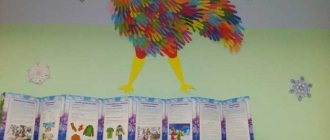Zhostovo trays have been delighting us with their exquisite live painting for centuries. They are made by craftsmen from the village of Zhostovo near Moscow. Magnificent dahlias and roses, delicate cornflowers and daisies, birds, butterflies, fruits and berries look as if they were alive. Graceful patterns are complemented by subtle details. Zhostovo painting is unique - it is impossible to find two identical products.
History of lacquer painting
Lacquer painting first appeared in China many hundreds of years ago. Residents of the Middle Kingdom painted boxes, vases, weapons and household items. Then the art of painting was mastered by residents of other countries in Southeast Asia: India, Korea, Japan.
Merchants brought magnificent products from oriental craftsmen to Europe in the 17th century. They immediately conquered the Europeans. In the 18th century, manufactories appeared in many European countries producing objects decorated with paintings in the “Chinese style”.
The art of painting came to Russia in the 18th century. The owner of the factories, Nikita Demidov, who visited Europe many times, organized workshops in the Ural city of Nizhny Tagil that were engaged in flower painting on metal.
Products made in the Urals quickly spread throughout Russia. Craftsmen made painted metal household items.
The idea of varnish painting was picked up by the Vishnyakov brothers. At the beginning of the 19th century, they opened a family business in the Moscow region - the production of painted items coated with varnish. At first, craftsmen produced objects from papier-mâché: snuff boxes, albums, boxes. Later, the Vishnyakov workshops, located in Zhostovo and other villages of the Troitskaya volost, stopped producing papier-mâché products and began making painted metal trays.
The products quickly gained popularity. Its peak occurred at the end of the 19th century. Later, in the post-revolutionary years, Zhostovo production sharply declined. But despite the difficult times, the art of painting has survived. In the sixties of the last century, the restoration of the production of Zhostovo trays began. Currently, the factory is actively working; works of artists participate in international exhibitions and decorate museums around the world.
Tray manufacturing technology
The tray is made by forging and stamping. Stamping of standard types of trays (there are more than 20 of them) is carried out using modern equipment from metal sheets. Trays of non-standard shapes are made by blacksmiths using the hand forging method. The manufactured trays are primed, puttyed and thoroughly sanded. The processed products are coated with black paint and oil varnish, cleaned and dried. After all technological operations, the trays are handed over to the artists for painting.
In addition to traditional black trays, the Zhostovo factory produces products with red, blue, green and light blue backgrounds. Thanks to special technological processing, the trays have an intensely saturated, but at the same time delicate and translucent background. Zhostovo painting of trays has its own characteristics - for example, shadows and highlights are only slightly drawn.
Training and application
Having noticed the child’s passion for drawing, you can send him to special Zhostovo painting courses for children. The best of them , including for adults, are held in Zhostovo itself. The scope of knowledge is quite wide. In addition to traditional trays, fabrics, nails, cars are painted in the Zhostovo style, and fashionable designs for kitchen furniture and walls are created.
Folk crafts associated with images of flowering plants symbolize eternal life, resurrection, love and joy. Any dream or wish can be expressed with elements of painting. Anyone who receives a Zhostovo bouquet from the artist will only have to unravel the message written in such an unusual, bright letter.
Main motives
Zhostovo painting is painted with squirrel brushes. For work, use oil paints diluted with turpentine. The ornament on the sides of the tray is painted either with white paint or with dissolved gold powder. There are two types of trays. Some are intended for household purposes. They are placed under samovars and used to serve food. Other products are intended for interior decoration.
The basis of ordinary Zhostovo painting is bouquets consisting of large and small flowers, leaves and herbs. In the center of the composition there are several large elements: roses, dahlias, peonies. Around them are smaller flowers and buds, interconnected by herbs and stems. Sometimes violets, bindweed or clover are placed in the foreground. Compositions can be supplemented with bunches of berries, birds and other elements. If the Zhostovo bouquet is in the center of the tray, then it is called collected. If the flowers are located around the perimeter, then the composition is called a wreath.
Sometimes only branches and bunches of berries or still lifes with fruit are depicted on the trays. Initially, the compositions were often taken from the paintings of famous artists, but interpreted them in their own way. And today artists use elements of classical painting, but at the same time they are looking for their own solutions. In addition to flower arrangements, famous Zhostovo subjects are depicted on the trays: landscapes, genre scenes, three horses. In each tray, elements of Zhostovo patterns clearly fit into the plane of the product, the depth and volume of the drawn objects are perfectly conveyed.
Gesture painting for children and adults
Having taken your child away from the computer, you must immediately offer him another absorbing activity. Coloring trays, fueled by looking at photographs of finished products, can captivate both a child and an adult drawing enthusiast for a long time.
Making a tray at home is, of course, difficult. But mastering the technique of Zhostovo painting and enjoying creativity is available to everyone. A bright pattern will decorate a cutting board , wooden utensils, a Christmas ball or an Easter egg. But you should start with training - drawing on paper.
“Zhostovo painting” coloring book, produced by the book industry, can also be used to teach preschool children. The contours here are already assembled according to the laws of composition or represent individual elements. But you shouldn’t get carried away with it: the principles of coloring contradict the free spirit of the Zhostovo pattern.
Materials and preparation
to train the skills of each step of painting, so at first the child can use watercolor, gouache and ordinary sketchbooks. Later they switch to silhouettes of trays cut out of black cardboard.
Once the basic elements have been mastered, you can purchase a cutting board or papier-mâché molds onto which the design will be applied. They are bought in art salons or made independently. At the factory in Zhostovo, including via the Internet, you can buy blank trays for painting. A less expensive purchase would be an ordinary galvanized bucket or basin. The fear of ruining expensive products will increase the responsibility of the novice artist before each stroke.
Wooden and paper products are primed with special compounds, selecting the background color. Metal objects are degreased, cleaned and coated with metal primer (it is convenient to use black or red aerosols). Used items are especially carefully cleaned, since Zhostovo painting requires a perfectly smooth surface.
Oil paints are used for work; they are recommended to be mixed with glossy varnishes to achieve an expressive image. Just buy the basic colors:
- red kraplak;
- cobalt blue;
- burnt bone;
- light ocher;
- emerald green;
- titanium white.
Inexpensive kits are suitable for training, but you should know that the properties of oil paints vary greatly depending on the composition. To thin the paint you will need linseed oil or turpentine.
The arrangement of Zhostovo flowers on a household item should correspond to the shape of the vessel being decorated. on a board or bucket , and an endless garland of flowers on the sides of a bowl or plate.
Stages of Zhostovo painting
Zhostovo painting is multi-layered. Layering layers of paint from dark to light creates volume and convexity of the design. Of course, each layer is applied after the previous one has completely dried.
First you should master the basic stages of creating an image:
- Underpainting or painting. Colorful spots appear, indicating the shape and location of large and medium-sized figures. At this stage, the composition problem is solved. Large flowers are located at the bottom or in the center, leaves are around, and two or three thin stems crown the bouquet.
- Shadow. The artist mentally sees a flower in a colorful outline and marks the shaded areas (the center of the flower, the bottom of the bud, etc.) with a dark tone of the main color.
- Glare. The main color is lightened with white, the convex places of flowers and leaves are drawn.
- Drawing. At this stage, the contours of the petals are emphasized, and jagged edges are drawn on the leaves.
- Binding. The grass is drawn with thin and clear strokes.
When analyzing finished products, you need to pay attention to the composition, basic shapes and try to reproduce them in the form of color spots . It is not recommended to make a pencil sketch; sticking to the lines will only harm the work of the imagination.
Elements of Zhostovo painting
Training should begin with simple, one-time strokes (sheet). By connecting three leaves, you get a “trefoil”. Two green strokes and one red make up a bud. The bud is planted on a stem and surrounded by leaves - it turns out to be a “twig”.
In the next lesson , they master broad strokes from which large flowers (roses and dahlias) and medium ones (poppies, bells, pansies) are composed.
Next they move on to fine technique, drawing thin stems, small inflorescences, ears of wheat, and curls.
There is no task to reproduce the flower exactly: the image of plants on the Zhostovo tray is creative, fantasy and only vaguely resembles nature.
Stages of creating a drawing
Artistic painting is characterized by a subtle selection of colors and rhythmic balance of the design. The work is carried out in several stages:
- Painting. The artist draws contours and silhouettes of future flowers, leaves and other designs of design elements. This is the basis of the pattern. The work is carried out with diluted paints. After this, the tray is dried for 12 hours.
- Tenezhka. The artist draws the shaded areas of objects, which makes the composition three-dimensional.
- Pad. This is the most critical stage of the image. Here the details of the composition are clarified, the background is lightened, and contrast is given to the picture.
- Glare. Highlights are applied, which gives the composition illumination and volume.
- Drawing. The artist uses a thin brush to apply the final touches to the details: the veins on the leaves, the outline of the edges, the stamens in the cups of the flowers.
- Binding. The flowers are tied to the stems and background of the tray. With the help of blades of grass, stems and twigs, the composition is tied together.
- Cleaning. This is the design of the edges of the tray. It can be modest or magnificent, like picture frames. Cleaning gives the Zhostovo painting a finished look.
Painting a tray with a Zhostovo pattern. Master class with step-by-step photos
“Painting a tray with a Zhostovo pattern” Master class with step-by-step photos.
Author: Raisa Vladimirovna Kolomytseva, teacher of the Rainbow MBDOU of the village of Tatsinskaya, Rostov region. Designed for older preschoolers, schoolchildren, teachers, parents, educators, for everyone who likes to engage in folk and applied arts. Goal: Acquaintance with the features of painting of Zhostovo craft. Objectives: - Master the basic techniques of Zhostovo writing in the process of performing creative work. — Development of a sense of composition, the ability to beautifully place a pattern on a given silhouette. — Develop creative thinking, imagination, attention, memory, interest in folk crafts. — Using this type of work as a source of joy not only for the child, but also for the people around him. A little history. The history of this painting begins in the village of Zhostovo, which is located near Moscow. There are other villages, but everyone knows about Zhostovo, they have heard about it abroad. Trays became in demand when the drink tea appeared, and before that there were mead, sbiten, and native Russian drinks. A ritual also appeared - tea drinking. For a long time, trays were made of papier-mâché, but in rich houses they used metal trays. But technology does not stand still and metal trays began to be made everywhere, and entire tray workshops began to open. The variety of shapes and sizes was amazing - these included six - octagonal, rectangular, oval and square, round and even triangular trays for corner tables. Much time has passed since then, but this fishery has not been forgotten and is thriving and living a full life. Of course, manufacturing technology has improved, science does not stand still, but the feeling of celebration and joy from the work of the master has remained. The bouquet consists of simple, unpretentious flowers, but how pleasing it is to the eye when you look at the tray. It’s very nice to receive a tray with a wonderful Zhostovo bouquet as a gift! Materials: - Gouache paints - Brushes No. 1, No. 3 - Silhouette of a tray cut out of cardboard. — A glass for water.
Progress.
Just as a house is built from bricks, a sentence from words, words from letters - in the same way, bouquets are made from flowers, flowers from petals, and petals from brush strokes. To begin with, let’s think carefully about the composition of the future pattern, since we will paint directly with a brush. We make paintings - apply silhouettes of flowers and leaves. To make the flower even and beautiful, mentally draw a line of balance and apply the petals in sequence. We use brush No. 3, then, on smaller details, we use brush No. 1. We place large flowers in the center of the bouquet, they are surrounded by smaller flowers, and small flowers and leaves are located at the very edges.
Now we make shading - we apply colored shadows with the help of which we indicate the volume and shadow areas of our bouquet.
Then we refine and highlight many of the details and get a more contrasting look - this stage is called padding.
Now let’s get to the glare , this stage is called glare. The mood and special flavor of our bouquet is created.
Well, let’s finish our creation with a drawing - we apply small but very significant strokes with a thin brush. We draw veins and lacy edges on the leaves, in the center of the flowers we designate “seeds”.
The work with the bouquet is finished, but now we use the technique of binding - this is when our bouquet seems to fit into the background with the help of thin blades of grass, stems, and all this seems to be connected and echoed together. The arrangement of blades of grass and stems gives lightness and splendor to the pattern. Only after such a connection does the tray become not just a tray, but a Zhostovo one. Let's take care of the tray itself - decorate the sides. This technique is called cleaning ; the pattern can be modest, or it can be luxurious. You can make a tray from papier-mâché, cover it with several layers of paint and paint it.
We recommend watching:
Origins and modern development of Zhostovo craft About Zhostovo painting for children Do-it-yourself New Year's tray painting Winter landscape with acrylic paints step by step
Similar articles:
Painting of Gzhel plates. Master Class
Step-by-step drawing for preschool children
The study of Zhostovo painting is carried out in senior and preparatory groups of kindergartens. Classes instill in children a love for the art of their people . To work you will need:
- kolinsky or squirrel brushes for drawing No. 2, No. 4, No. 5;
- gouache paints and palette;
- jar for washing brushes;
- cloth for wiping;
- cotton buds.
For work, it is better to use round brushes or products with a thin tip.
While working, kids gain the following skills:
- The ability to highlight artistic elements of a pattern, color and composition;
- Studying the techniques of painting with a brush: the end and the entire surface, performing a “double stroke”, “zigzag” and “comma”.
Image of flowers
The training begins with drawing large flowers. You can start with the technique of depicting a dahlia in stages. Let it be yellow-red. To make it easier for beginning artists to learn, a pencil sketch is first made. To depict dahlias, a technique called “double brushstroke” is used. The brush is dipped in yellow paint and the excess is removed.
